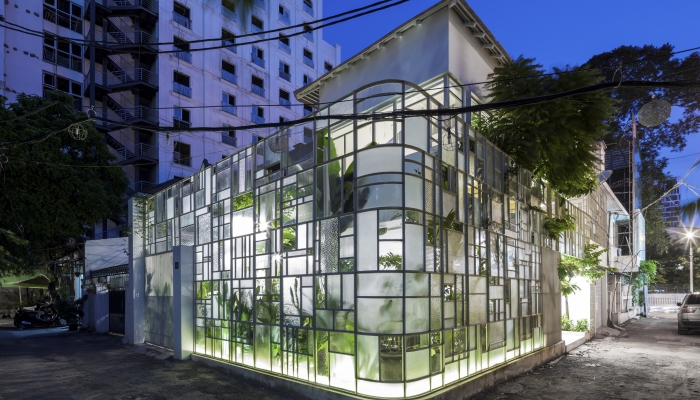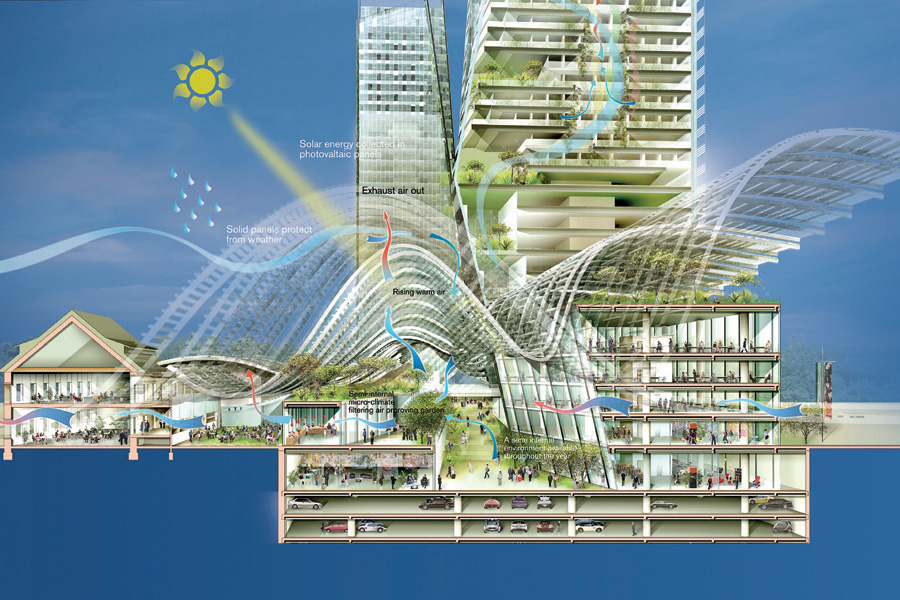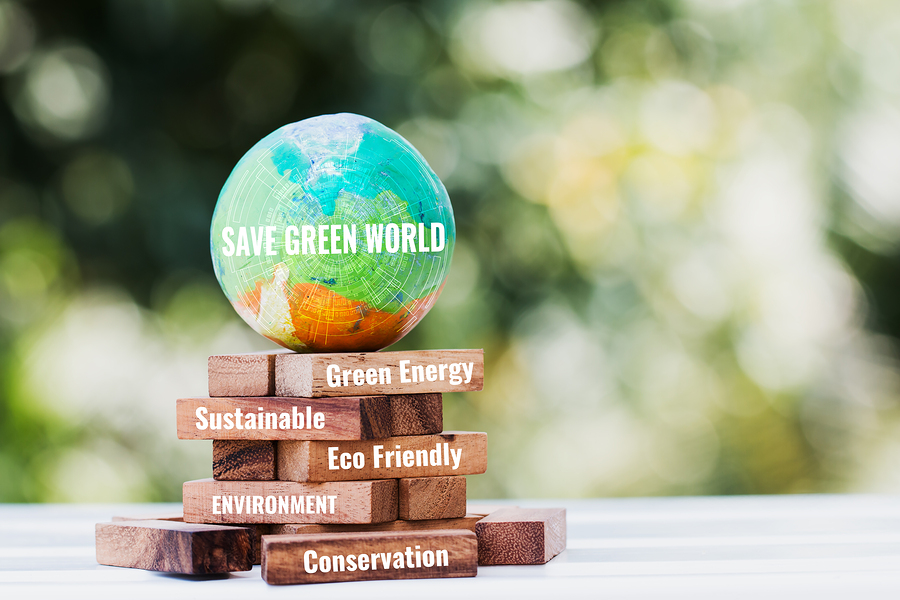Disclosure: As an Amazon Associate I earn from qualifying purchases. This page may contain affiliate links, which means I may receive a commission if you click a link and purchase something that I have recommended. There is no additional cost to you whatsoever.
Green building construction is a general term used to describe designing and constructing environmentally conscious and sustainable buildings.
The main impetus that supports building green is that people can lessen the harmful effects to the environment, while simultaneously building healthy and safe buildings in which they can dwell and do their jobs.
By some estimates, we are indoors about 90% of the time. This is the reason why researchers think people have more allergies, asthma, and sick days from jobs and schools, and further consideration is being made regarding exposure to dangerous chemicals that are found in the building materials in homes.
A number of studies have demonstrated that those who work in buildings have higher levels of productivity.
Those who utilize green buildings are absent less often; they also have higher levels of job satisfactions as well as better grades.
Here are some of the criteria buildings are designed to address:
1- Reduce carbon footprint or environmental impact.
2- Use resources wisely and efficiently.
3- Increase the productivity of employees.
4- Protect the health of the occupants.
If a building is built with sound environmental principles, asthma, allergy, and other “sick building” symptoms are reduced, and the work environment feels more friendly. There are many elements involved in techniques of green building.

Current statistics indicate that 39% of the US’s carbon emissions come from private homes. These same homes consume more than 15 trillion gallons of water and consume more than 70% of the electricity used in the US.
These two statistics are important for people who live in growing urban areas, regardless of the dubious controversy regarding the negative impact of greenhouse gases on the natural environment.
With the population increase, the old electrical and water systems plus the crowded landfills, creating and constructing durable buildings just makes common sense.
Additional information reveals that green buildings utilize 36% less energy, need fewer raw building materials and send less waste to landfills. Also, the price of building green is usually not too expensive; just one or two percent higher than a regular building.
Green buildings help conserve water and electricity and provide many other benefits, thanks to sustainable design.
Therefore, even though building green can cost more money when focusing on the near future, buildings actually cost less money over a longer period of time, because they are able to conserve additional energy.
Regardless of these sorts of problems and armed with the knowledge of green building, people who support the idea of sustainable construction are coming together to try to resolve the issues. Sustainability 2030 is the brainchild of the American Institute of Architects (AIA).
They want all buildings to be carbon neutral by 2030.
Preventing indoor microbial contamination is a focus of building. With green technology, materials used in constructing and finishing a building are selected for their low or zero emissions capability, thus improving indoor air quality.
Toxic gases are emitted by many of the standard products utilized in construction, cleaning and maintenance. This has a detrimental effect on the health and productivity of those who occupy the buildings. Green construction and finishing does not utilize these products.

Also going green includes working with recycled materials to lower costs. Buildings are continually being demolished and reconstructed. Resources are quickly being depleted as the population increases along with demand for buildings.
A sixth of the world’s fresh water, a quarter of the harvested forest, and two fifth’s of the world’s energy flow all goes to green buildings. Approximately 22% comes from materials retrieved from building demolitions. Construction costs can be reduced and our supply of natural resources extended via the recycling and reuse of these materials.
Approximately 25% of the materials utilized in green construction are recycled.
Something else that can increase efficiency with green building is to utilize glass panels rather than wood panels. In this way, natural light can enter the building during the daylight hours. Systems to harvest rainwater are being put in a lot of green buildings to catch rainwater and help with water preservation.
Here are some of the technological components that assure natural resources are properly used in a green structure: solar panel roofing, solar water heaters, compact fluorescent lights. Harnessing non-conventional energy resources is highly desirable and encouraged.
Green building construction uses a minimal amount of freshly cut wood, due to the fact that the world’s forest cover is going through daily depletion.
If it becomes necessary to use new wood in constructing green buildings, then the wood of fast growing trees is used to minimize any ecological effect using such material may have on the environment.
The emphasis is on minimizing the use of natural resources that may be scarce. Disposing of garbage correctly must be a priority. In green buildings, refuse is sorted into biodegradable and non-biodegradable categories to be properly disposed of.
An additional major factor is to keep energy use to a minimum in green buildings. The utilization of power is kept to a minimum in green buildings because they have energy censors installed.
The lights turn off automatically when a room is unoccupied. Green building methods take efficiency and water conservation measures quite seriously. When inside green buildings, water is used as efficiently as it can be.
Gray water reclaimed from kitchens and bathrooms can be recycled to flush toilets. When we utilize sustainable green building construction, our environment is positively impacted and, in the long run, we create healthier surroundings for ourselves.
So, what is green building construction, when all is said and done? It is a basic concept: do the right thing and it benefits the next generation, the environment, and yourself.
Many companies focus on the bottom line, but they should realize that over time they will save a great deal of money if they conserve energy and water and utilize green construction materials.
In addition, a green company provides leadership in stewardship of the environment.







